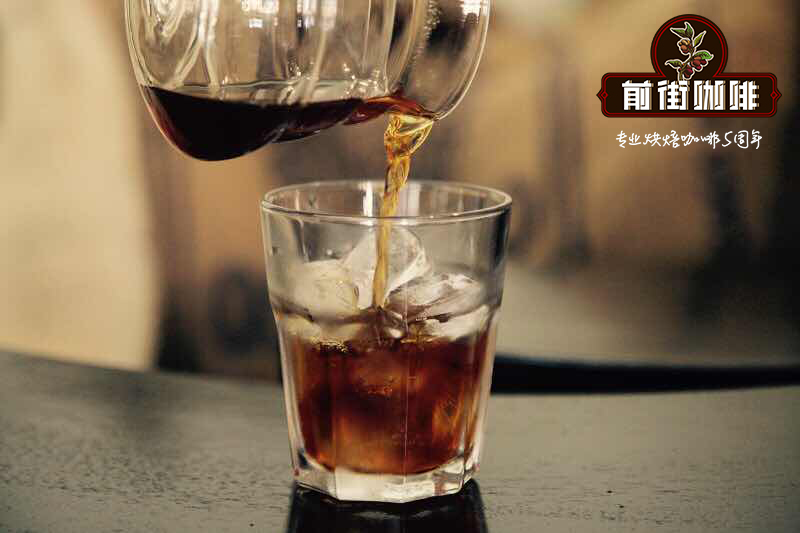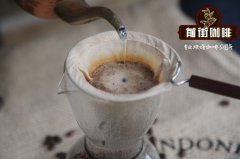What do you need to pay attention to when making ice drop coffee? why is ice drop coffee called Dutch coffee

Professional coffee knowledge exchange more coffee bean information please follow the coffee workshop (Wechat official account cafe_style)
The principle of ice drop coffee is the process of extracting flavor substances from coffee powder by dripping ice bit by bit at a uniform rate based on the nature of coffee dissolving with water.
The ice water at the top of the container is controlled by the valve, the coffee powder is infiltrated drop by drop, the coffee liquid is filtered and collected in the pot at the bottom, the whole process is uniform and slow, slow extraction at low temperature, so that the original flavor of coffee can be reproduced naturally.
At the same time, low water temperature reduces the extraction of acid and bitter components, so that the coffee flavor is soft and mellow, and the sour and bitter is balanced.
Ice drop coffee is also known as "cold brew coffee cold" or "water drip coffee", also known as Dutch coffee (Dutch coffee).
It is said that during the Dutch rule over Indonesia, many varieties of coffee were grown by Robesta, and in order to drink these rather bitter beans in the tropics, they specially invented a device for brewing coffee with slowly dripping cold water. An interesting phenomenon is that you can hardly find this kind of coffee in the Netherlands. Instead, it has sparked a wave of ice drops in Asia.
1. Coffee beans with ice drops
The coffee beans used in making ice drop coffee usually have a separate formula to make it easier to extract warm and full-bodied taste, while many friends, including our Qianjie coffee, all like to use better boutique coffee beans to extract ice drop coffee, which can obtain more individual flavor and flavor with personal preference. However, because ice drop coffee is infiltrated and extracted with cold water for a long time, I suggest that coffee beans with a stronger flavor can be selected for ice drop coffee beans, such as Kenya and Yega beans with strong personality. and the coffee extracted in this way will have a very strong personality.
The recipes we often use:
Sun Sidamo [candle] 60% + [Kenya] 40%
[Yimenmoka sun] 30% + [Uganda sun] 30%
Qianjie [Flower Butterfly] 50g + Panama [Love Sage Manor] 30g
2. The importance of flattening coffee powder
Ice drop coffee must be powdered, many people do not understand why ice drop coffee should also be pressed powder.
Here, it should be noted that the ice drop coffee powder is not compacted, but first gently pat the powder to keep the structure of the coffee powder in the filter uniform, and then use a flat-bottomed powder hammer to flatten it gently. Here, remember to press the powder gently, not as hard as extraction and concentration. If you press the powder too firmly, because the ice drop coffee does not have the pressure to extract like the coffee machine, it is easy to cause stagnant water in the powder layer and cannot filter the coffee liquid. And the ice drop filter paper or filter is usually at the bottom, unlike the coffee cup, which has a breathable convex groove, so when the coffee powder is soaked in water, the exhaust effect will also be affected, which will cause the whole pressed powder to be extracted unevenly.
3. Pre-wetting
The use of ice water "pre-immersion" is actually similar to the foggy steaming process in hand flushing, which can improve the extraction effect and the consistency of the finished product. in the case of ice droplet extraction at low temperature and in the form of filtration, direct ice droplets may cause uneven wetting of the powder layer. part of the coffee powder was overextracted while the other part of the coffee powder was not involved in the extraction.
4. Use filter cloth + filter paper
Increase the contact between water droplets and coffee powder to ensure uniform extraction
There is enough pre-soaking space for coffee to make the extracted coffee flavor more complete and clean. we use filter cloth and filter paper. after flattening the coffee powder, we suggest that you cover the coffee powder with a piece of filter paper. When the water droplets fall and touch the coffee powder, a small pit will slowly drip out from the surface of the coffee powder, and the water will flow down the pit instead of spreading around, so the coffee powder in the whole bottle will not be completely infiltrated, resulting in insufficient extraction, which can be avoided by laying a layer of filter paper.
We have compared the water droplets formed by different curling kettles and studied the ways in which coffee powder is absorbed by water droplets of different shapes. We found that the long water droplets lag behind and have a greater impact, so the coffee powder is soaked downward, which means that the coffee powder on the surface is more likely to be underextracted, while the round water droplets lag behind and have less impact. the soaking mode of coffee powder will spread around (as shown in the figure below), which means that round water droplets will more easily make the extraction of the whole ice drop more uniform. This also means that the dripping nozzle shape of the ice drip kettle is very important, and the mouth shape that can drip round water droplets is our preferred option.
5. the powder-to-water ratio of coffee, for a more appropriate level.
Coffee beans: water: ice 1:5:5
We are generally used to the powder-to-water ratio between 1:10 or 1:12. Personally, I think the powdered water in this range is more appropriate than the expression of flavor, and the coffee is neither too strong nor too weak. If you are used to serving ice to guests, it can be a little thicker to keep the coffee concentration after melting at an easy-to-taste level, depending on your taste.
These are the five factors to pay attention to in making iced coffee, and the best flavor should be kept for at least another 12-24 hours. This makes the aroma of coffee more outstanding.
END
Important Notice :
前街咖啡 FrontStreet Coffee has moved to new addredd:
FrontStreet Coffee Address: 315,Donghua East Road,GuangZhou
Tel:020 38364473
- Prev

Why American coffee tastes sour | can you drink it when it's sour? | Coffee has sour taste.
Professional coffee knowledge exchange more coffee bean information please pay attention to the coffee workshop (Wechat official account cafe_style) Coffee should not be bitter? Why does American coffee taste sour? Can I still drink the coffee when it's sour? People who don't drink coffee very much will wonder why when they suddenly drink some fine coffee. This thing is not bitter? Why is it still sour?
- Next

Coffee Golden Bean Competition | introduction to African TOH Coffee Competition | Coffee beans in TOH Competition
Professional coffee knowledge exchange more coffee bean information please follow the coffee workshop (Wechat official account cafe_style) every year major coffee producing countries in Africa hold a national raw bean competition, called "Harvest season Flavor Competition" (The Taste of Harvest; TOH), similar to the Cup of Excellence Cup in Central and South America, TOH becomes the discovery of Kenya and Yesso.
Related
- Beginners will see the "Coffee pull flower" guide!
- What is the difference between ice blog purified milk and ordinary milk coffee?
- Why is the Philippines the largest producer of crops in Liberia?
- For coffee extraction, should the fine powder be retained?
- How does extracted espresso fill pressed powder? How much strength does it take to press the powder?
- How to make jasmine cold extract coffee? Is the jasmine + latte good?
- Will this little toy really make the coffee taste better? How does Lily Drip affect coffee extraction?
- Will the action of slapping the filter cup also affect coffee extraction?
- What's the difference between powder-to-water ratio and powder-to-liquid ratio?
- What is the Ethiopian local species? What does it have to do with Heirloom native species?

